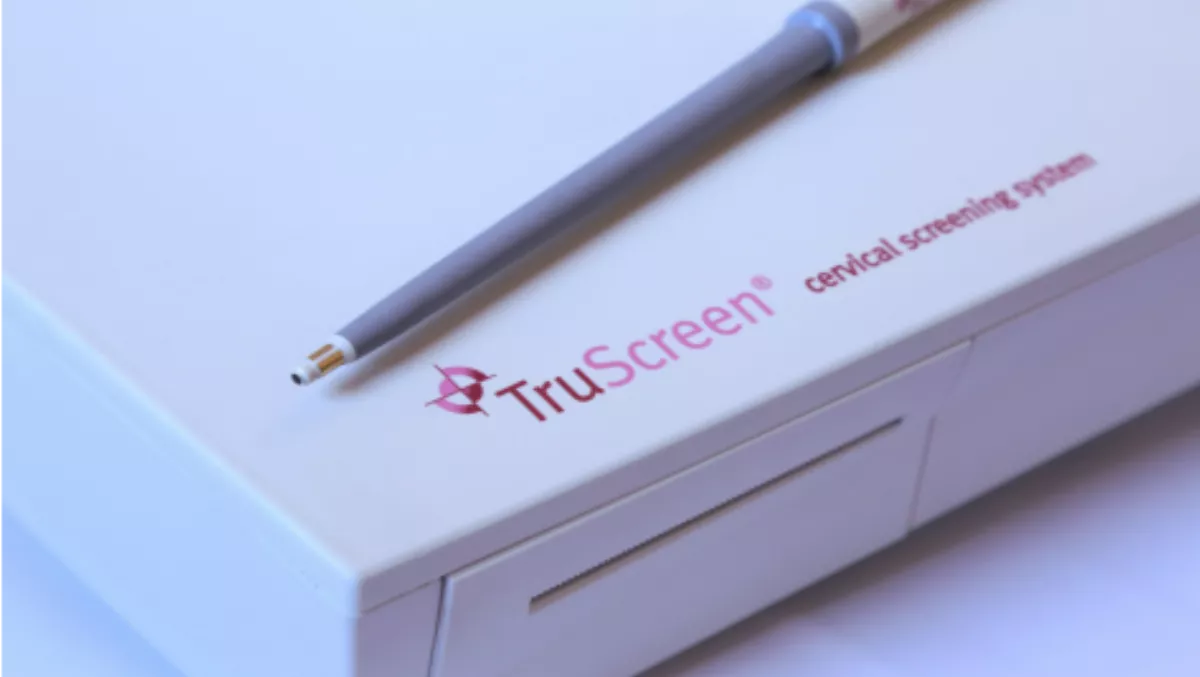
Kiwi cancer screening tech firm finding success on NZAX
A New Zealand company TruScreen with its pioneering, real time cervical screening technology has enjoyed a successful first day of trading on the NZAX.
Interest in the technology, which took scientists over 15 years to develop, has been strong with distribution partners confirmed in 11 countries including China, Indonesia, Russia and Mexico.
TruScreen Ltd’s system utilises a digital wand which is touched on the surface of the cervix to measure electrical and optical signals from the surrounding tissue and identify precancerous change, or cervical intraepithelial neoplasia (CIN).
CEO Martin Dillon says while the company’s initial focus is on cervical screening, the unique TruScreen technology, has potential application for detecting cancer in a broad range of tissue types, including bowel, oral and pharyngeal.
A total of 144 million shares were issued to new investors by the majority Kiwi owned firm.
TruScreen CEO Martin Dillon said the offer attracted strong support from a wide range of investors who saw the potential value in the technology.
Dillon says the new device resolves many of the ongoing issues developing economies experience with Pap tests, including; failed samples, poor patient follow up and the need for significant supporting laboratory infrastructure and lengthy and expensive operator training.
He says the device also removes the need for scraped samples, which makes the TruScreen procedure more comfortable for women and more culturally acceptable for some ethnic groups.
“The technology has undergone many years of clinical trials and gained regulatory approval in numerous countries, including the coveted CE mark for Europe,” says Dillon.
He says the Auckland based company’s first marketing focus is on developing nations where national screening programmes like those offered in New Zealand and Australia are not already in place.
“Around 70% of cervical cancer cases occur in low income countries - primarily due to the cost of establishing a population based monitoring framework,” he says.
Dillon says more than half a million women are estimated to contract cervical cancer each year with more than a quarter of a million dying from the disease worldwide.
He says one of the issues third world nations have encountered is that during the delays in the weeks between testing and results, patient contact is often lost.
“These issues can be remedied with TruScreen which offers real time results and is completely portable, allowing medical teams to reach remote areas and provide immediate, accurate diagnosis,” says Dillon.
“The screening operators do not need to be qualified GPs, as the device requires minimal training and automatically alerts them if the screening is not conducted correctly,” he says.
Dillion says the TruScreen business model allows the company to provide the device at a minimal markup and derive an ongoing revenue stream from consumables.
“In one of the most profitable Asian markets we operate in, we have one programme where our devices screened 50 women daily per device, representing a per device income of $70,000 per annum. Of course not all devices will have this throughput but it does demonstrate the enormous potential of our technology" says Dillon.
Already the new business has generated revenue of $400,000 in export sales in the first six months of this financial year, and has been given a capital funding boost of $6.5 million from a group of professional investors. Dillon says the working capital is directed towards the acquisition of inventory, the securing of IP, the expansion of markets and ongoing product development.
“Our sales forecast for the 2016 financial year is in excess of $10 million but the market potential is much larger. There are around 1 billion women of screening age living in our target economies. That $10m represents just 0.15% of this target market."
“One third of these women live in China, where our distribution model is already well advanced,” he says.
Dillion says TruScreen Ltd’s intellectual property is protected through a series of patents and trademarks, and by holding secret certain key manufacturing elements.
“Key elements of each of the three main production processes are held in-house. No external supplier has enough information to replicate the integrated unit,” he says.
Dillion says 144 million shares have been issued, and at $0.10 per share he says the majority New Zealand owned firm will have an expected market capitalisation of $14 million at listing.


